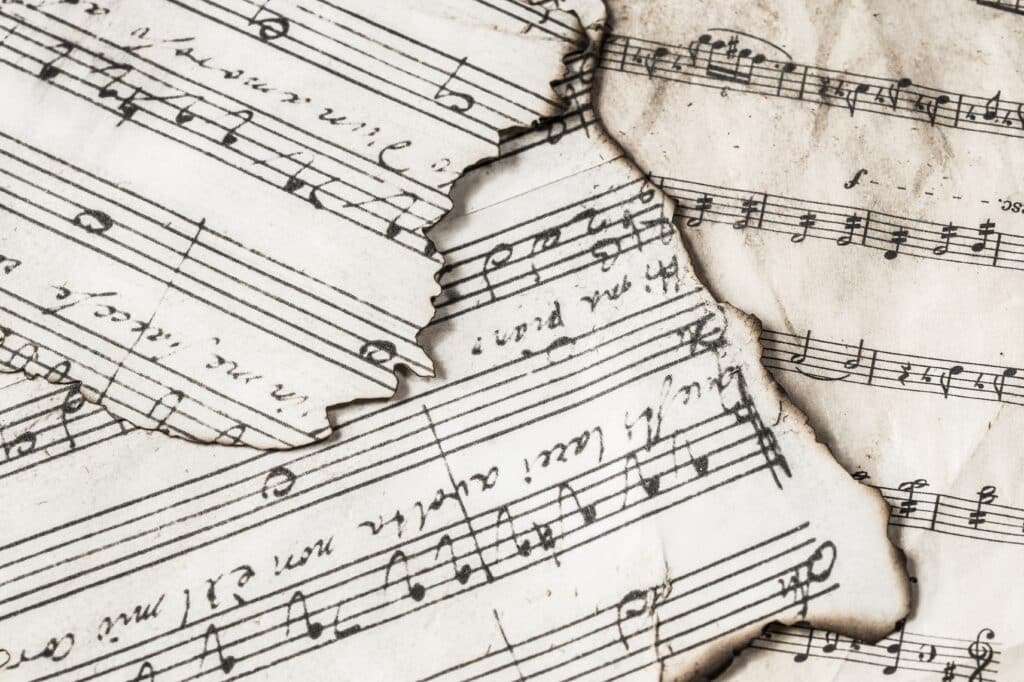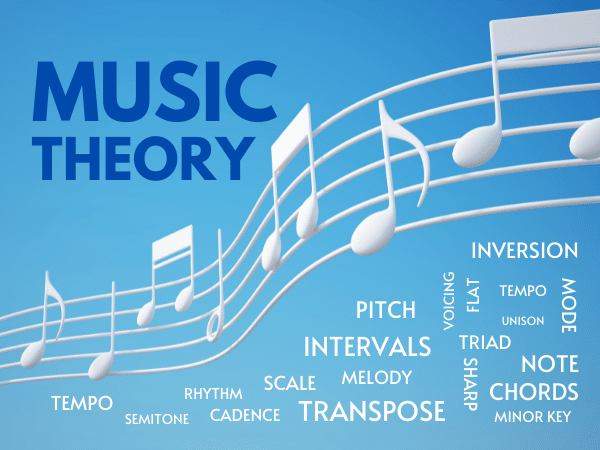Last Updated on May 26, 2023 by IDS Team
In guitar music theory, modes carry a reputation for being hard. However, once you know their basic patterns, they can be a simple way of spicing up your guitar playing. Essentially, modes are a set of seven kinds of scale. Yet, they actually can all be grouped based on the Ionian, or major scale.
What are the Modes in Guitar Music Theory?
The names of the modes come from seven cities in Ancient Greece, and in fact, modes have been with us since ancient times. Also known as church modes, they were traditionally used in church services to create a certain mood. Read on for how you can use them in modern guitar – and how to break down the theory behind them.
1. Learn the Modes As Separate Scales
You may have heard modes described as all variations of the same scale – the Ionian mode, or major scale. To an extent, this is true in terms of music theory. However, it doesn’t help beginner guitarists who want to get into playing with modes as the reality is much more complex.
Are Guitar Modes and Scales the Same?
It can be hard to think of modes in terms of a single scale due to the nature of the fretboard. Instead, it’s more helpful to learn the modes as separate scales in their own right. This way you can also use the major and minor scales (Ionian and Aeolian modes) as a comparison to help memorize modes.

To learn modes as a scale, they can be divided into whole and half steps. These form the particular sequence that makes up that particular scale – just like with any scale.
What Notes Do Modes Start On?
Modes can start on any note, depending on which mode you are playing. Instead, it is easier to learn the sequence of whole and half steps in a mode, so you can apply them to any key. The sequences for each of the seven church modes are as follows:
Lydian: W W W H W W H
Ionian: W W H W W W H
Mixolydian: W W H W W H W
Dorian: W H W W W H W
Aeolian: W H W W H W W
Phyrigian: H W W W H W W
Locrian: H W W H W W W
2. Learn Which Chords Go With Which Modes
It goes without saying, but if you want real freedom of composition and to move around the fretboard, it’s best to learn which scales go with which modes. By doing so, it also means you can use modes more consistently in your composition and arrangement and production. For example, if the chorus of a song is in Ionian mode, and the melody then changes into Dorian mode during the middle eight, naturally there’s going to be a change in the chord progression as well.
How Do Chords Relate to Modes in Guitar Music Theory?
Learning the chords that go with modes can actually help you figure out chord progressions. Alternatively, they can serve as a source of inspiration in composition as you can play with certain modes. These can go over certain parts of an existing chord progression to make a vocal line or guitar riff.
What Modes Work Over What Chords?
Or, alternatively, what chords go best with what modes? The chords that tend to go with each mode are as follows:
Lydian: major, maj7, maj9
Ionian: major, major 7th
Mixolydian: major, dom7 dom9
Dorian: minor, minor 7th
Aeolian: minor, minor 7th, minor 9th, minor 11th
Phyrigian: minor, minor 7th,
Locrian: m7b5 chords, dim chords
3. Learn The Circle of Fifths to Master Modes in Guitar Music Theory
What does the circle of fifths have to do with modes? It turns out, quite a lot.
Music is full of patterns, and the circle of fifths, a way of arranging the note used in Western music, also provides a tool to figure out modes.
Simply put, the circle of fifths is an arrangement of notes where each note is a fifth above the last one. Already familiar with the whole and half-step sequences that form the basic modal scale patterns? You can use the circle of fifths to find out the notes of any modal scale.
How Do Guitar Music Theory Modes Relate to the Circle of Fifths?
If you follow the circle of fifths in a clockwise direction, you can then change the notes that correspond to the flattened or sharpened scale degrees in each mode. In this way, you can figure out the exact notes your need. This topic is too detailed to fully explore here, but knowing the circle of fifths is a valuable tool that also applies to modes, means they become way less daunting to use in your own music.
4. Learn the Emotional Order of the Modes
Sometimes, the way some forms of music theory explain modes takes them out of context. Ionian mode, or the major scale, is one of the most used in pop and rock music. Thus it tends to be the one guitarists start learning. But the world of guitar is much bigger and more varied than that.
What is the Order of Modes in Guitar Theory?
Often, guitarists learn modes in an order based on the notes of the Ionian, or major scale. However, did you know you can also arrange modes in order of the ‘lightest’ sounding to the ‘darkest’ sounding? Genres such as jazz guitar rely heavily on the Dorian mode, whereas many subgenres of metal like to experiment with Phrygian and Locrian modes.
Therefore it helps to know the emotions of the modes to figure out which is best to use. Once you’ve learned this, practicing them in this order can help you not only compare them and understand how each developed to create a certain atmosphere, but see the note changes that are responsible for their particular qualities.
What is the Emotional Order of Modes?
In short, the emotional order of modes arranges the modes from ‘lightest’ to ‘darkest’.
Lydian, Ionian, Mixolydian, Dorian, Aeolian, Phyrigian, Locrian
However, just like the political horseshoe, Lydian mode, and Locrian mode are closer to each other than you might imagine. In fact, using the circle of fifths, Lydian becomes Locrian by transposing every tone (except the root) down a single half-step.
5. How Do Guitar Music Theory Modes Fit Into the Guitar Fretboard?
Of course, there’s no use learning the modes if you can’t use them to play solos or write songs. Learning how modes fit together on the guitar fretboard means you’ll have the confidence to actually manipulate them. This allows you to create compositions from more different elements.
How Do You Connect Guitar Modes?
At the heart of modal theory, there are two basic ways that you can fit modes into the guitar fretboard. The first way keeps the same scale pattern and uses the emotional order of modes (Lydian to Locrian) which alters only one note at a time. Therefore, it’s really, really easy to learn how one mode goes to the other.
How to Play Guitar Modes All Over the Fretboard
However, you can also learn to play a single mode all over the fretboard. This is because all of the modes have their own scale pattern. Yet, when put in the context of the same root note, they actually all make the same mode. This way, by learning the fretboard patterns for each mode, you can translate any mode all over the fretboard. In fact, this works in the same way as the more familiar CAGED system.
You can play the same mode all over the fretboard by learning and using the set shapes that correspond to the names of each mode. Don’t let the confusing naming put you off! All shapes can be used for all modes. In fact, if you have learned the CAGED positions, this method uses the same pattern recognition skills.
Final Thoughts
Learning modes is a different process for every guitarist. Sometimes, the most confusing thing about them is how they all relate back to a single scale. This can make them seem paradoxical at first. Yet, after experimenting, you realize they can be thought of both ways depending on what you find most useful. In this way, they are a valuable Swiss army knife whenever you feel like compositions or arrangements are lacking something.
If you like tutorials, we have a whole section where we dig into different ways of thinking about music here.



